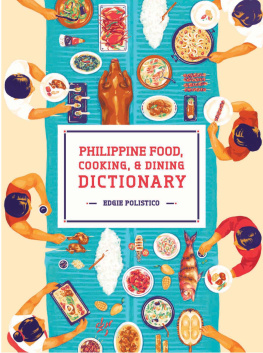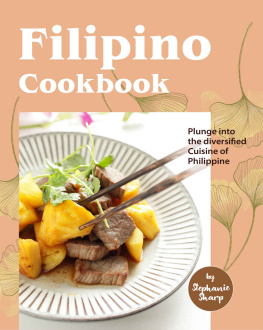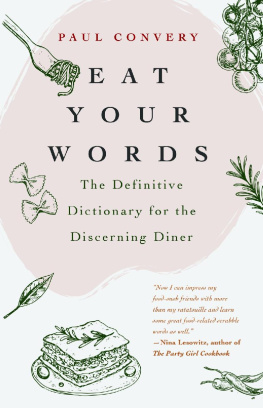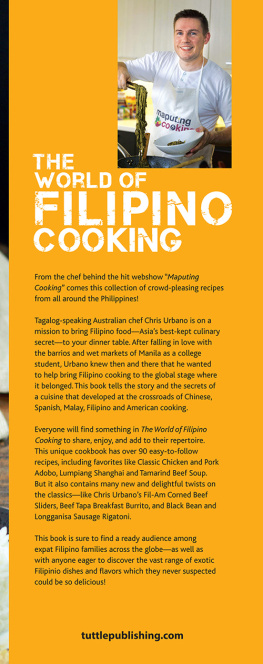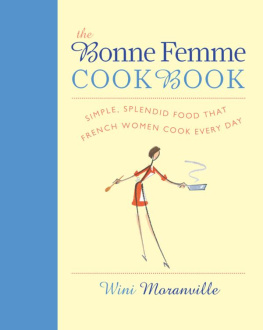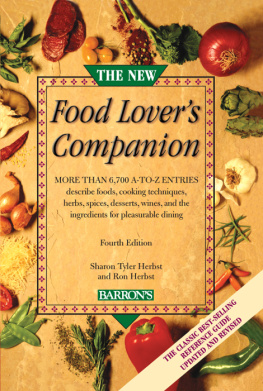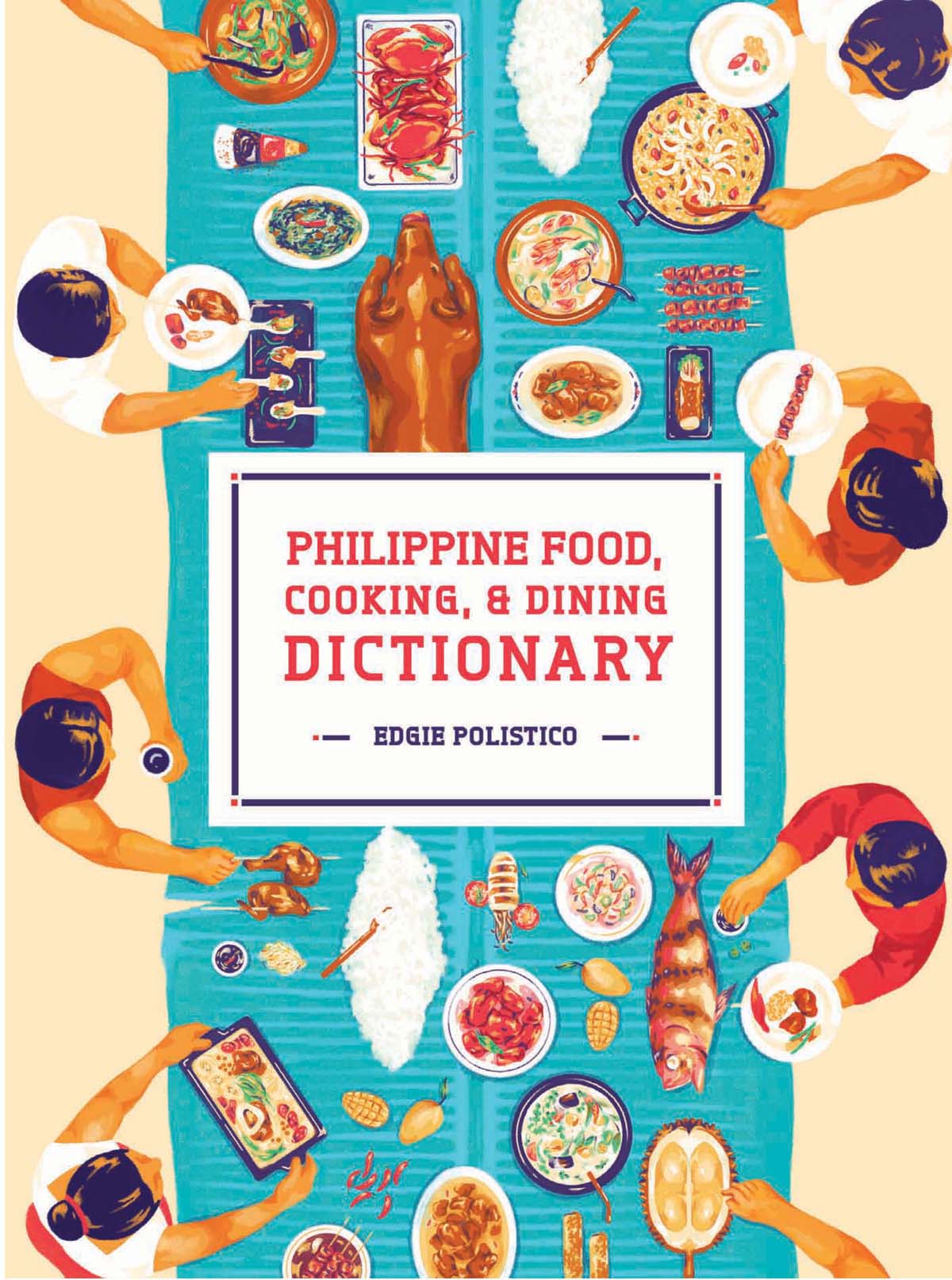P HILIPPINE F OOD , C OOKING, AND D INING D ICTIONARY
PHILIPPINE FOOD,
COOKING, & DINING
DICTIONARY
EDGIE POLISTICO
P HILIPPINE F OOD , C OOKING, AND D INING D ICTIONARY
Copyright to this digital edition 2016 by
E DGIE P OLISTICO and A NVIL P UBLISHING I NC.
All rights reserved.
No part of this book may be reproduced
in any form or by any means
without the written permission
of the copyright owners and the publisher.
Published and exclusively distributed by
ANVIL PUBLISHING INC.
7th Floor Quad Alpha Centrum
125 Pioneer Street
Mandaluyong City 1550 Philippines
Telephones: (632) 477-4752, 477-4755 to 57
Locals 815 and 817
Fax: (632) 747-1622
www.anvilpublishing.com
Edited by A TEL E. J AZMINES
Book design by A DRIAN P ANADERO (cover) and S OC O RLINA (interior)
ISBN 9786214200870 (e-book)
Version 1.0.1
Foreword
More Is Better
Felice Prudente Sta. Maria
J une 2, 1975 is memorable in my life. That day I purchased a copy of Larousse Gastronomique described as a monumental work glorifying the French kitchen. The coveted 1,098-page book of food, wine, and cooking terms was an English translation of the French original compiled by celebrity chef and food writer Prosper Montagn (18651948). The book, published in 1938, was described first as a dictionary, then an encyclopedia by no less than the honorable Auguste Escoffier, king of cooks and cook of kings, in the preface he had penned.
None of the cookbooks in my home collection then could offer the long-term, sustained delight Larousse did. The original contains over a million words and was said to be the longest single volume cookery book ever written in its day. The alphabetized entries cover cooking ingredients, kitchen tools, prepared food and beverages, identifying or baseline recipes for both court and home fare, biographies of chefs and famous gourmands, food sayings, table and serving paraphernalia, etiquette, and more regardless of their foreign or unknown origins as long as they had impact on the development of French cuisine from prehistoric times to the epoch of the tomes publication. That there were a million French culinary words amazed me. Immediately I wondered how many there were in the Philippines.
Culinary terms were mixed into general word lists and dictionaries for Philippine languages from as far back as the 1521 circumnavigation led by Fernando Magallanes. Recipe books occasionally included short glossaries. But never was there a specialized culinary dictionary for Philippine food. Edgie Polisticos Philippine Food, Cooking, and Dining Dictionary is the book I have been waiting for since 1975! It is the closest lovers of Philippine cuisine have so far to a native Larousse Gastronomique.
It is one effort to study words and relate them to the chronological changes in how a society cooks and eats, the modifications fashion and science have on alimentation and their impact on national self-imaging, national self-appreciationwhich is what I do. It is quite another type of challenge to collect words and their definitions, to make a dictionarywhich is what Edgie has done since he was fourteen years old and will continue to do lifelong. Collecting, whether of tangibles or intangibles, is, after all, habit forming. It is like learning and knowledge; they provide joys from the adrenalin rush that discovery and eureka moments guarantee. Researchthe investigation to answer whats, hows, whens, and whysis an amazing flame that impassions. And upon publication in traditional or electronic media, there is the added happiness gained from sharing discoveries with a public.
Dictionaries, like encyclopedias and lexicons, are befuddled by a shared, singular dilemma. They are voluminous and thus price themselves out of the common, popular market. And yet, the value in them is precisely their span, their hefty corpulence. If thoughtfully well stocked, a dictionary improves its assurance that readers and users will be well fed by it.
How a people chooses to feed its members is a fundamental aspect of cultureculture being how a society lives, the way of life it follows. When an anthropologist begins to study a group of people, the standard start-up brief always includes the geography, climate, and natural resources of where they reside and move about. Then research describes painstakingly their system of relatedness or kinship from family to community; their rites of passage from conception to death; their understanding of ownership and inheritance; their standards for valuation of material and non-material elements; their organization based on religion, politics, economics, and work; their skills and tools including language; their ways to assure food and drink using gathering and hunting, agriculture, and industry.
How a society lives is a composite of what its people do with what surrounds themwhat nature provides and what people have addedin order to attain a desired quality of life, or what today is termed sustainable well-being. Food is one of cultures manifestations that is so quick changing or dynamic, to use a developmental studies term. Change anything in the ingredients and their natural surroundings, the cooking procedures and their technology, even the mindset of those who cook and eat and the food is sure to change, too. Heritage flavors are tricky to reproduce accurately. At their best, they are interpreted lovingly and with what cooks and caring descendants believe to be the closest approximation of old-time ingredients and tools.
Edgies list of food from all over the archipelago offers a lot to signify as cultural heritage. He records variations of a cooked food not only by region but also sometimes from town to nearby town. Food words of comparatively recent vintageonly a decade or two scores old, such as those for urban street fare and rural food using processed flavor enhancersdescribe a contemporary culinary landscape requiring nutritional critique, while simultaneously applauding their innovation and piercing pop humor.
Although food and food choices affect all walks of life, cuisine has been left out of the national discourse toward cultural literacy, moral valuation, and effective citizenship. Yet what and how Filipinos eat require astuteness of safety and quality assurance; sustenance enough to banish famine and assure food security; widespread appreciation of farmers, fishers, and food artisans through fair compensation and their continuing adult education; protection of local food sources especially from detrimental effects of global climate change; and giving those in the food sector a strong, educated voice in how the country handles its foreign food trade, local nutrition, and environmental sustainability. Perhaps the sheer thickness of Edgies book and its numerous number of entries will attract cultural scientists to review the role of food in contemporary civics and moral shaping.
For the common cook and the everyday foodie, Edgies dictionary offers proof of why one can appreciate and defend the honor of Philippine cuisine. A word is evidence that a concept, a value, a relationship with the world exists in the society that invented and uses the word. Karaya is the ability of the mind to form images. Gambila is the mention or reference to something still fresh in the memory. Both terms, sadly, are unused yet they are glimpses into the once-upon-a-time popular Filipino intellect.
Thankfully one of my favorite Tagalog words survives in the electronic pinoydictionary that Edgie helped establish. It is defined online as satisfaction after performing a good deed. In an earlier dictionary before e-media, it was described as the satisfying coolness or internal refreshment felt after performing a spiritual task. Indeed food feeds body and soul. This dictionary will feed both as well as a national hunger for celebration of Philippine cultural heritage.

